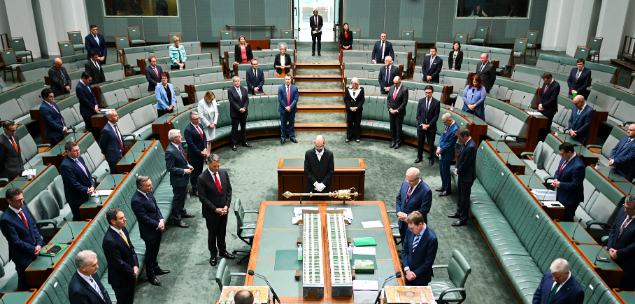Yesterday the prime minister Scott Morrison announced a second stimulus package of $66 billion to help the economy survive the impacts of the COVID-19 outbreak.
The federal parliament could sit for just one day today to pass the government’s stimulus measures as quickly as possible, before members of parliaments reduce meetings for social distancing purposes.
The $66 billion stimulus package aims to assist workers, households and businesses and comes on top of $17.6 billion on measures announced 11 days ago.
With the Reserve Bank of Australia already slashing the cash rate to a record-low of 0.25 per cent last week, this second round of stimulus builds on this and the existing measures to stimulate the economy – providing much needed cash flow support over a longer period.
Key points of the second stimulus package are explained below.
Tax-free cash payments for small businesses and non-for-profits
Amount
Anywhere between $20,000 – $100,000
(The first stimulus package initially provided up to $25,000 to business, with a minimum payment of $2,000)
Eligibility
Small and medium sized business entities with aggregated annual turnover under $50 million and that employ workers are eligible.
How to access
The cash payments will be delivered by the Australian Taxation Office (ATO) as a credit in the activity statement system from 28 April 2020 upon businesses lodging eligible upcoming activity statements. Find out more here.
Extension on statutory demand deadlines
There is a temporary increase to the threshold at which creditors can issue a statutory demand on a company and the time companies have to respond to statutory demands they receive.
The Government is temporarily increasing the current minimum threshold for creditors issuing a statutory demand on a company under the Corporations Act 2001 from $2,000 to $20,000. This will apply for 6 months.
An example of how this would work, and help your business:
“Steph, Mon and David own a small company that operates a chain of yoga studios in Sydney. Social distancing measures require the participants in the yoga class to be significantly reduced. As a result, their company incurs more debt, to the point where it cannot meet its debts as and when they become due and payable.
Under the provisions of the Corporations Act, the 3 owners would be personally liable if the business took on further debt without entering an insolvency procedure like voluntary administration or liquidation.
However, during the 6 month period in which the temporary relief is offered, their business can continue to open their yoga studios so that they can maintain their customers and quickly resume normal operations when the crisis has passed, and continue to incur debt. When economic conditions improve, the company can pay back the debt incurred.”
This example is taken from the government’s website where more information on credit, director liability and administration can be found.
Doubled Jobseeker Payment for six months
Workers that have been laid off due to the pandemic will be able to access an additional $550 per fortnight.
This is for both new and existing income support recipients, as of 27thApril 2020.
People will receive their usual payment, plus $550, for a six month period.
The Coronavirus Supplement will be provided to people receiving:
- JobSeeker Payment
- Sickness Allowance
- Youth Allowance for jobseekers
- Parenting Payment Partnered
- Parenting Payment Single
- Partner Allowance
- Sickness Allowance
- Farm Household Allowance.
More info on this allowance here.
RELATED:
- RBA cuts rate to record low and commences QE
- Update: Massive economic stimulus to fight virus
- Brands pivot their marketing strategies in the wake of the coronavirus
$10,000 from your superannuation
Those experiencing financial difficulty can access up to $10,000 of their superannuation in each financial year (2019-2020, and 2020-2021).
This means you can access $10,000 before July 1st 2020 and a further $10,000 maximum before July 1st 2021.
These withdrawals will be tax-free and available to those who are eligible for the coronavirus supplement, as well as sole traders who have seen their hours work, or income fall, 20 per cent or more as a result of the coronavirus.
Eligibility
To apply for this ‘early release’ you must meet any one or more of the following requirements:
- you are unemployed; or
- you are eligible to receive a job seeker payment, youth allowance for jobseekers, parenting payment (which includes the single and partnered payments), special benefit or farm household allowance; or
- on or after 1 January 2020:
you were made redundant; or - your working hours were reduced by 20 per cent or more; or
- if you are a sole trader — your business was suspended or there was a reduction in your turnover of 20 per cent or more.
People accessing their superannuation will not need to pay tax on amounts released and the money they withdraw will not affect Centrelink or Veterans’ Affairs payments.
How to access it
You can apply directly to the ATO through the myGov website: www.my.gov.au. You will need to certify that you meet the above eligibility criteria. You will be able to apply from mid-April 2020.
Guaranteed 50% on loans
This follows the recent announcement that no repayments of business loans will be required for six months.
Under the Coronavirus SME Guarantee Scheme, the Government will guarantee 50 per cent of new loans issued by eligible lenders to SMEs.
The Government’s support will enhance lenders’ willingness and ability to provide credit to SMEs with the Scheme able to support $40 billion of lending to SMEs.
The Scheme will complement the announcement the Government has made to cut red-tape to allow SMEs to get access to credit faster.
This is Dynamic Business’s summary of the stimulus package and the main takeaways so far, however further measures are detailed in the government’s website directly.
RELATED

